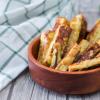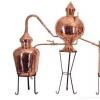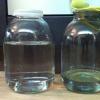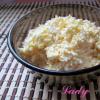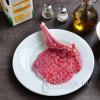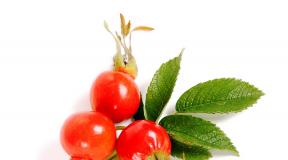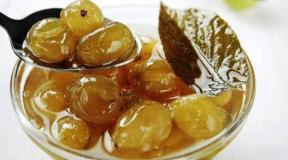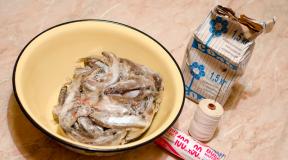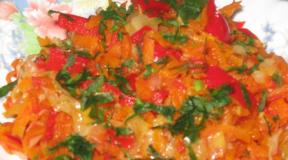1 faceted glass how many grams of flour. How many grams of sugar are in one tablespoon
When preparing almost any dish, we measure the amount necessary ingredients in our usual ways, be it a glass, a cup or a spoon. And all would be fine, but only glasses and cups are not the same for everyone, and in many recipes the weight is indicated the desired product in grams.
In such cases, an indispensable thing is which indicates both the number of milliliters for various kinds of liquids, and the weight in grams for dry products. Even with this useful kitchen appliance, it doesn't hurt to know the volume of the utensils most often used in food preparation.
A teaspoon contains 5 ml of water, three times more, that is, 15 ml; familiar to everyone, which is also called "Stalinist" or "Soviet", there are two types - with a smooth rim and without it. A glass with a rim is considered a tea glass, since it was in it that the train conductors carried tea around the carriage, the volume of this glass is 250 ml; the same glass, but without a rim - 200 ml.
It is important to remember that the volume of the dishes is not always equal to the weight of the food. For approximate data, a table of measures and weights of products may be useful. In grams, many dry foods weigh much less than their volume in milliliters.
The tables below provide gram volume equivalent by weight, breaking down foods into convenient subcategories.
Note: The table of measures and weights of products in grams is designed taking into account the filling of the dishes as follows:
- spoon - with a small slide;
- glass - to the brim;
- can - to the neck.
Bulk products
This type includes cereals, flour and some others. The table of bulk products offers the main methods of measurement - a spoon and a glass, dividing them into several types, according to the volume. For the convenience of preparing large portions, cans with a volume of half a liter and a liter have been added.

Always read the recipe carefully - one cup of flour does not mean 200 g of flour, even if your cup is slightly larger than 200 ml. Remember that in a "Stalinist" teapot, filled to the brim, there is only 160 g of flour.
Note: If there is no traditional at hand in your kitchen, then it can be replaced with a plastic one. A standard clear polypropylene disposable cup holds exactly 200 ml of water.
Product name | Weights in grams |
||||||
The spoon | Glass | 0.5 liter can | Bank 1 liter |
||||
teahouse | dessert | dining room | 200 ml | 250 ml |
|||
Shelled peas | |||||||
Pearl barley |
|||||||
Semolina | |||||||
Corn flour | |||||||
Wheat groats |
|||||||
Barley groats |
|||||||
Wheat flour | |||||||
Powdered milk | |||||||
Oat flakes | |||||||
Hercules | |||||||
Cornflakes | |||||||
Spices and additives (ground)
Since in the preparation of most dishes, spices are needed a little, a teaspoon and a tablespoon become their main yardsticks. For convenience, a standard volume of 10 ml was added. Spoon measures of weight of food are not volume equivalents.
The weight of most spices and additives depends on the grind and quality of the product. For example, large ground coffee will weigh slightly more than finely ground coffee.

Note:
- The table of measures and weights of products in grams does not guarantee an absolutely accurate weight, since the consistency and size of many products are not always the same.
- Very often spices are measured in pinches, in one pinch about a quarter of a teaspoon.
Product | Product weight |
|||
Tea spoon | Dessert spoon | Tablespoon |
||
Baking soda | ||||
Powdered sugar |
||||
Lemon acid | ||||
Baking powder |
||||
Ground coffee |
||||
Breadcrumbs |
||||
Instant coffee | ||||
Carnation |
||||
Liquids
Liquids are almost always measured in milliliters, which makes food preparation much easier, since it is enough to know the volume of the dishes in which the food is usually measured. In the case when prescription liquids are measured in grams, their weight is as close as possible to the volume.
Liquid product | Product weight in grams |
||||||
Tea l. (5 ml) | Dessert l. (10 ml) | Dining room l. (15 ml) | 200 ml | 250 ml | 500 ml | 1000 ml |
|
Ghee butter | |||||||
Melted fat | |||||||
Sunflower / olive oil | |||||||
Melted margarine | |||||||
Solid foods
Note: The following table of measures and weights of products in grams provides approximate data. The exact weight of products depends on their size and type..
Product name | Weights in grams |
||||||
The spoon | Glass | 0.5 liter can | Bank 1 liter |
||||
teahouse | dessert | dining room | 200 ml | 250 ml |
|||
Small lentils | |||||||
Whole peas | |||||||
Large lentils | |||||||
Ground walnut | |||||||
Currant | |||||||
Peeled peanuts | |||||||
Peeled hazelnuts | |||||||
Walnut, whole peeled | |||||||
Strawberry | |||||||
Peeled almonds | |||||||
Viscous products
Consider the last variety of products.
Product name | Weights in grams |
||||||
The spoon | Glass | 0.5 liter can | Bank 1 liter |
||||
teahouse | dessert | dining room | 200 ml | 250 ml |
|||
Boiled condensed milk | |||||||
Berry / fruit puree | |||||||
Jam / Jam | |||||||
Condensed milk | |||||||
Tomato paste |
|||||||
How many grams of sugar in a glass of sugar the table will tell you. But with the help of a glass and knowledge, what is the volume of glasses, how much does a glass hold ml of sugar or grams, it is easy to find the answer to the question yourself: how much is 150 grams of sugar in a glass? A glass of sugar - how many grams - you need to know if you have to measure sugar in grams yourself using a glass.
Sugar in a glass of 200 ml and 250 ml is easy to weigh without scales. Faceted and standard sized teapots are used when you need to measure sugar at home. The tea (thin-walled) glass has a volume of 250 ml. Faceted (thick-walled) standard glass holds 200 ml.
Testimonial advises. To obtain an accurate measure of the weight of sugar (granulated sugar), it is necessary to take into account how full the glass is filled with sugar. You can pour sugar into glasses to the brim or to the rim of the faceted glass. The weight of sugar in grams in both options will be different, and this is worth remembering.
Measuring sugar in glasses is widely used in home cooking... Plain, refined granulated sugar and refined sugar are vital important products nutrition. Sweet ingredient is included in recipes, it is added in small quantities to pizza, to American ones. Without sugar, it is impossible to cook delicious and beloved and bake delicious.
To accurately weigh sugar with a glass to comply correct proportions a sweet component in a recipe, you need to have a measuring plastic cup at home or a well-known faceted drinking glass that has come down from Soviet times to the present day.
Types of faceted glass
The use of a measuring cup often raises doubts about the accuracy of determining the weight of bulk sugar. The most popular measure of the weight of bulk products in household use is considered to be a faceted glass with a capacity of 200 ml and 250 ml. Faceted glasses differ in capacity, they are small and large:
- a small faceted glass is 50 ml;
- the next volume of 100 ml is half a large faceted glass;
- it is followed by a glass with an average capacity of 150 ml;
- a standard glass with a capacity of 200 ml and 250 ml is considered;
- 300 ml and 350 ml - glassware with a significant volume is used, as a rule, in bars for alcoholic beverages... For the measurement of bulk products and liquids, capacities of 300 ml and 350 ml are not used.
What to do if the volume in ml is not indicated on the glass at home, the exact capacity is unknown glass containers? Determining the capacity of your faceted glass is easy. To find out the exact volume in a glass, you need glassware fill with sugar using a tablespoon. By calculating how much is in a glass, you can easily determine the volume of a faceted glass itself.
Standard dimensions of faceted glass
How else to find out the volume of the glass? Simply, for this you can measure the glass with a ruler or centimeter. The answer to the question will be prompted by the dimensions of a standard faceted glass:
- The number of faces can vary from 16 to 20 pieces;
- The outer height with a rim (with a line) is 105 mm;
- The height of the rim (rim) of the glass is about 14 mm;
- The base diameter on the outside is 55 mm;
- The outer diameter of the upper part is 73 mm.
You need to understand that the volume of a faceted glass and the weight of sugar poured into it have different numerical values. All products and liquid substances, in addition to water, have different densities; in the case of sugar, the exact weight is influenced by the size of the grains (crystals) in different types granulated sugar.
Respectively, various productsplaced in the same measure of volume will have different weights. The difference in the weight of granulated sugar when cooking is minimal. In everyday life, a faceted glass is considered to be the standard of weight.
1 glass of sugar - how many grams
Kitchen scales, as you know, are used to weigh products, including bulk, sugar. In addition to the weights, the measurement of the mass of ingredients at home is often carried out using teaspoons, tablespoons and, when the preparation pore begins, with the help of glasses.
The authors of culinary recipes from berries, from sweet and berry offer the proportions of sugar in kilograms, grams, and very rarely in glasses. It is easy to measure a kilogram of food in a glass; to get an accurate weight figure, you just need to know, a glass of sugar - how many grams?
How many grams of sugar are in a glass
It is more correct to measure sugar with an ordinary faceted glass with standard dimensions and a volume of 200 ml. When calculating, as a rule, take as a basis a full faceted glass of sugar, filled to the top.
How many grams of sugar are in a 200 ml glass
- 1 full faceted glass (200 ml) holds 200 grams of sugar (granulated sugar) - this is a glass filled to the brim or to the top.
- 1 faceted 200 ml glass, covered with sugar up to the rim (risks or edges), contains 160 grams of sugar.
In addition to faceted glasses, sugar can be measured with a tea (or it is also called thin) glass.
How much sugar is in a 250 ml teacup
- One 250 ml full teacup holds 250 grams of sugar (granulated sugar).
- 1 teacup 250 ml, filled to the risk (to the rim), holds 200 grams of sugar.
How many tablespoons of sugar are in a glass
If, when preparing dishes, the sugar in the ingredients for the recipe is indicated in a quarter of a glass, one second, two thirds and three fourths, and you also need an answer to the question of how many tablespoons of sugar fit in 1 glass, refer to the convenient table. The calculation table is made taking into account the volume of a 200 ml faceted glass.
- How many tablespoons of sugar are in a faceted glass. Answer: 1 faceted glass filled to the brim holds 8 tablespoons of sugar with top or 10 tablespoons of granulated sugar without top.
- a quarter of a glass of sugar - how many tablespoons. Answer: A quarter cup of sugar is 2 rounded tablespoons of granulated sugar.
- half a glass of sugar - how many tablespoons. Answer: Half a glass of sugar is 4 tablespoons of granulated sugar.
- two-thirds of a glass of sugar - how many tablespoons. Answer: Two-thirds of a glass of sugar is about 5 rounded tablespoons of granulated sugar.
- three quarters of a glass of sugar - how many tablespoons. Answer: Three-quarters of a cup of sugar is 6 tablespoons of granulated sugar.
How many grams of sugar are in a glass: table
How much a glass of sugar weighs by eye is difficult to say. IN culinary recipes the weight of sugar is often indicated in grams or glasses. Without a kitchen scale, it is problematic to quickly measure the required mass and volume of sugar according to the recipe with high accuracy to the gram. Than in addition to scales you can measure granulated sugar, how many grams of sugar are in a glass:
- One fourth of a glass of sugar is how much. One fourth cup of sugar weighs 50 grams.
- One second glass of sugar is how much. 0.5 cups of sugar or half a cup of sugar weighs 100 grams.
- Two-thirds of a glass of sugar is how much. Two-thirds of a cup of sugar weighs about 130 grams.
- Three fourth glasses of sugar is how much. 0.75 cups of sugar (or three-fourths of a cup of sugar) weighs 150 grams.
- How many glasses of sugar are there in a kilogram of sugar. 1 kg of sugar equals 5 full faceted glasses of sugar.
- How much is 100 grams of sugar in a glass. 100 g of sugar - half a faceted glass of sugar.
- How much is 150 grams of sugar in a glass. 150 grams of sugar.
- How much is 200 grams of sugar in a glass. The weight of 200 g of sugar is equal to 1 glass of sugar (200 ml) filled to the top.
- 250 grams of sugar is how much in a glass. 250 g sugar - 1 full tea glass 250 ml.
- 300 grams of sugar is how much in glasses. The weight of 300 g of sugar corresponds to one and a half faceted glasses of sugar.
- How many cups are 350 grams of sugar. The weight of 350 g of sugar is equal to 1 full and three quarters of a faceted glass of sugar. Or, in terms of 350 grams of sugar, you get 1 glass and 6 tablespoons of sugar with top.
- How many glasses are 400 grams of sugar. 400 g sugar and 2 cups cut sugarfilled to the brim is an equal amount of granulated sugar.
- How many cups are 500 grams of sugar. 500 g of sugar and 2 and a half full faceted glasses of sugar are equivalent.
- How many cups are 600 grams of sugar. 600 grams of sugar is equal to 3 full faceted glasses of granulated sugar.
- How many cups are 700 grams of sugar. 700 g of sugar is 3 and a half cups of granulated sugar.
- How many cups are 800 grams of sugar. 800 g of sugar is 4 faceted glasses of sugar full to the brim.
- How many glasses are 900 grams of sugar. 900 g of sugar is 4 and a half faceted glasses of sugar filled to the top.
How to measure sugar with a measuring cup: volume in ml and weight in grams
If you have a plastic measuring cup at home, you can measure the weight of the sugar in the measuring cup. To convert milliliters to grams, you need to multiply the right amount milliliters by a factor of 0.8. If the weight in grams is multiplied by a factor of 1.25, we get the volume in milliliters.
- Volume 50 ml \u003d 40 grams of sugar;
- 100 ml \u003d 80 gr;
- 125 ml \u003d 100 g;
- 150 ml \u003d 120 g;
- 200 ml \u003d 160 g;
- 250 ml \u003d 200 g;
- 500 ml \u003d 400 g;
- 1 liter \u003d 800 grams.
How many glasses of sugar are in one kilogram
Knowing how much granulated sugar weighs in a 200 ml glass, it is easy to calculate how many glasses of 250 ml are in one kilogram of sugar
- 1 kilogram (or 1000 grams) holds 4 full glasses of sugar.
How much granulated sugar weighs in a glass must be taken into account when measuring sugar with a measuring cup or with an ordinary glass. Sugar is sweet bulk productoften used for cooking homemade baked goods: lush, large, small.
Knowing the exact weight of sugar in grams allows you to cook in compliance exact proportions sweet ingredient and, as a result, get rave reviews from households after tasting delicious, tender and juicy or italian pizza under the delicious.
Information about how much sugar is in a faceted glass and how many grams of sugar are in a 250 ml glass will help you measure sugar according to a recipe using 200 ml and 250 ml glasses when there is no kitchen scale at hand.
IN cookbooks and on sites containing recipes, the designations “200 g of flour”, “1 tsp. soda "and so on. These measures of calculation are necessary in order to get a tasty dish, and for this, the indicated proportions must be observed. Adding ingredients "by eye" leads to spoilage of the final product, wrong consistency - too liquid or, conversely, too thick.
Cooking is both a science and an art, requiring, like other crafts, a thorough approach to business. It often happens that the hostess does not have at hand measuring scales for accurate measurement. A glass comes to the rescue, which is in every kitchen.
 Purchase of special kitchen scales - perfect solution for those who like to cook at home. But what if there is no such device.
Purchase of special kitchen scales - perfect solution for those who like to cook at home. But what if there is no such device.
Typically used for measurement:
- Spoons: tea, table and dessert (not always). In one teaspoon - 4 grams of flour, with a slide - 5; in the dining room - 10, with a slide - 15.
- Banks of 0.5, 1, 1.5 and 3 liters;
- Glasses: regular, plastic, faceted, measured. In an average standard glass 140 grams of flour, with a slide - about 150. It is very important to note that the wheat product should be poured to the edges of the container, but not more.
What are the glasses
There are four types of glasses:

How many grams of flour in 1 glass
An ordinary thin glass (250 milliliters) holds 160 g.
1.5 cups flour - how much is a gram?
The volume can be determined without special scales.
After some simple calculations, we get the required amount:
- a glass holds 160 grams of flour;
- 1.5 cups - 240 g.
How to weigh flour without scales with a glass
It's simple! Before cooking, study the ingredients and their gramme, this is very important. For example, the dough is the basis for pizza, pies, buns, pies, pancakes, and if flour is incorrectly added, it may not work out at all, and the final dish will not be tasty at all. Too a large number of wheat product affects the taste - raw flour is clearly felt.
On websites and books, someone immediately leaves notes on how many glasses, someone writes the number of spoons, and often there are only grams. As mentioned above, it is most convenient to use a measuring cup, and in its absence, know the volume of the container into which you will pour the wheat product. But remember - the value of the volume is never equal to the weight of the flour!
Good to know
Dishes made from wheat flourvery helpful! They normalize metabolism, remove waste and toxins from the body, and significantly strengthen muscle tissue. The same bread contains a significant energy value due to its high carbohydrate content. Of course, do not forget about overeating, and during diets, flour should be completely excluded.
When cooking culinary delights, dietary meals, and just a daily meal, it is often required to measure products in grams. To prepare a dish according to a recipe, we must take a certain amount of the product, which is indicated in grams or milliliters, most often the first indicator acts as a measure of weight. And it doesn't matter what we are talking about - a free-flowing, solid, or liquid product.
Kitchen scales - although the invention is not new, you can not find it in every home. Experienced housewives, often without this they can determine how much substance to take, using an ordinary glass for this. We will look at their idea and tell you how many grams can be in a glass, depending on the type of product. Let's take the most common components of various dishes in order to learn how to cook all the most delicious and healthy, exactly according to the proportions indicated in the cookbook.
How to measure the weight of food with a glass
An excellent alternative to kitchen scales is a measuring cup, where it is written from different sides what substance weighs how much with a certain fullness of the container. But even such a simple device is not always at hand, unlike an ordinary glass. Moreover, the dishes will come in handy even where the kitchen scales are not able to cope well with the task. For example, if you need to know the weight of yogurt, cottage cheese, milk, kefir. Of course, these substances can also be placed on the scales, but this will require additional capacity, for this reason there is no need to talk about the reliable accuracy of the result.
At first glance, the question of how many grams are in a glass may seem far-fetched. Some are sure: there is about 200 gr in such a container. product. But it all depends on the type of product, or rather, on the density, shape and condition. A glass of flour and milk are very different in weight, no matter how strange it may sound.
Before moving on to considering weight certain products, we will decide in which cups we will carry out measurements. With the exception of the measured one, this can also be done using a 200 ml faceted glass, or a 250 ml tea glass. Also, a regular plastic cup will be a good alternative, it contains exactly 200 ml. It is important to remember that it is not always possible to put an equal sign between the volume of substances, expressed in milliliters, and the weight in grams. In grams, most solids weigh much less than their milliliters.
.jpg)
To find out how many grams of product are in a faceted glass, it is necessary to fill the container as much as possible. Ideally, the cup should be filled in such a way that no more than one millimeter remains between the edge and the edible substance.
It is also important to know how to send the substance to the container. Liquid food should be poured into a glass, and solid or viscous products fall asleep or spoon over.
How many grams is in 1 glass of flour?
One of the most popular questions when it comes to food weight is how many grams of flour are in a glass. Fans of baking and other culinary delights, where this ingredient is the main component, should know that 130 grams will fit in a two-hundred-millimeter glass. flour. If you have a container with a volume of 250 ml, then 160 g will come out. wheat product. By the way, the same indicators are for corn flour... And here potato flour weighs slightly more: 150 and 180 gr. respectively.
How many grams of sugar are in a glass
This is the next most popular question. Of course, if the recipe contains flour, you will probably need sugar to prepare the dish. Without an ingredient, it is impossible to cook jam, marmalade, jelly and similar goodies. Since a lot of sweet substance is needed in these dishes, a glass is the best fit as a measure of weight.
Faceted or plastic with a volume of 200 ml will "fit" 180 gr. sugar, and if you take a 250 ml tea cup, then all 200 grams of sugar will fit there.
How many cereals and nuts are in a glass
.jpg)
Rice groats are the most popular product in our country, various dishes we cook from it almost weekly. Therefore, the question: a glass of rice - how many grams - is by no means idle. Rice porrige, risotto, boiled rice, pilaf - there are countless dishes with this cereal, and therefore it will not be superfluous to remember that in a 250 ml glass there will be as many as 240 grams of rice. If you have a small container of 200 ml, filling it to the top, you get 180 gr. healthy cereals.
Iron-rich is no less popular with us buckwheat grain, is not disputed. The recent rise in prices, which almost every Russian noticed, also indirectly testifies to the unimaginable popularity of the product. The battles for this cereal in stores, repeatedly shown on TV, are remembered by many. Buckwheat grains have a non-standard shape, close to round, which is why there are small gaps between the grains, which can be seen by pouring the cereals into a transparent container. For this reason, buckwheat will fit in a glass less than, for example, rice. How many grams of buckwheat are in a glass? In faceted or plastic 165, and in a tea room all 210 gr.
Delicious or not very good, with lumps, or a pleasant consistency, semolina well known to our compatriots and residents of the CIS, one might say, from the cradle. But porridge is far from the only dish where this cereal is needed. It is used to make cutlets, casseroles, pies and cakes. Inside a faceted glass 160 grams of semolina will fit, and a thin-walled tea filled with cereals will hold 200 gr.
A favorite breakfast of devotees proper nutrition and the British cereals, have considerable weight. Therefore, only 80 grams will fit in a 200-hundred milliliter dish. product, and in a plastic or tea room - 100 grams.
Often in the most varied dishes you need to add peas. Soups, cereals, jelly, casseroles - list culinary creations can be listed for a long time. A nutritious, high-calorie product that can replace meat in some cases. Beneficial features cultures have not gone unnoticed by the inhabitants of a number of countries. A faceted, plastic glass is 185 grams of peas, and a tea cup is 230 grams.
.jpg)
Nuts are often measured large portions for cooking delicious dishes... In addition, this is useful knowledge for those who like to "indulge" this calorie product as a snack. Of course, we must not forget about the benefits of this food for the whole organism. In cooking, they often use walnuts, thanks to the original, tart taste, they become an important component delicious sauces... A faceted glass will fit 135 gr. walnuts without shell, in tea thin-walled - about 170.
Weight of a glass of salt
How did salt get on this list, some readers may ask? We do not use the substance in glasses, when preparing dishes, we use tablespoons or teaspoons as much as possible. But sometimes you may need just such a measure of weight - and for salt. For instance, more dose the product is used for the preparation of brines, salting lard or curing meat. It is extremely important here to observe the proportions indicated in the recipe, otherwise the dish may simply not be canned or may taste unpleasant. In a 250 ml container, you get a whole 320 gr. salt! If measurements are taken in a faceted or plastic cup 200 ml, at the exit we will have 220 gr. product.
How many grams are in a glass of water
Sometimes it is required to measure water in grams. It is this liquid that is the standard of measure, saying that the glass contains 200 ml, we mean that exactly 200 g can be poured into it. water. Due to its density and elasticity, water completely fills the container, leaving no voids.
How much does a glass of milk and dairy products weigh?
.jpg)
No less important for novice cooks will be the answer to the question, how many grams are in a glass of milk. This product, like water, has a high density, therefore it has the same weight. A tea glass fits 250 gr. "Cow" product, and faceted - 200 gr.
The situation is different with other dairy products, they may weigh more or less milk... The dry product, often used for the preparation of desserts and other dishes, fits in a faceted glass in the amount of 100 grams, and 120 grams can fit in a tea cup. product.
But condensed milk with sugar weighs more than usual, which is logical. In a glass with a capacity of 200 grams, you can pour 250 grams, and in a bowl with a volume of 250 grams, 300 grams will fit. goodies.
The weight of a glass of kefir and sour cream
This fermented milk product highly prized in cooking: it can become the basis of delicious and healthy sauces, gravy and dough. Also, kefir will become a complete and healthy afternoon snack or dinner for those who strive for perfect figure... In any case, a glass of kefir, how much will be in grams, is information that will come in handy different groups people. Due to its high density, kefir, like milk and water, will take up the entire container. This means that 200 grams of kefir will enter in a faceted and plastic cup of 200 ml, and 250 grams in a 250 milliliter cup.
A glass of sour cream, how many grams does it weigh? The answer to this question is also interesting for those who like to cook. This product is used for cooking delicious pastries and other desserts, aromatic sauces and gravy. In a faceted glass of sour cream 210 gr., In a thin-walled tea glass - 250 gr.
Table of the weight of a glass of different products
In order to systematize the information received as much as possible, we will provide a convenient table that will be easy to use if necessary.
Novice culinary specialists often ask themselves the question: how many glasses is 200 grams? Based on the information received, an approximate answer can be given. 200 gr. is a little more or less than a plastic cup. In some cases, such a glass may contain much more or less product, as in the example with condensed milk or milk powder.
| Weight measure table in grams | ||
| Dry food | ||
| Product name | Glass 200 ml | Glass 250 ml |
| Salt | 255 | 320 |
| Peas | 185 | 230 |
| Rice | 185 | 230 |
| Millet | 175 | 220 |
| Buckwheat | 165 | 210 |
| Granulated sugar | 160 | 200 |
| Semolina | 160 | 200 |
| Powdered milk | 100 | 120 |
| Cereals | 80 | 100 |
| Wheat flour | 130 | 160 |
| Liquid Products | ||
| Water | 200 | 250 |
| Milk | 200 | 250 |
| Cream | 200 | 250 |
| Ghee butter | 195 | 240 |
| Sunflower / olive oil | 185 | 230 |
| Condensed milk | 240 | 300 |
| Jam | 275 | 340 |
| Honey | 260 | 325 |
| Tomato paste | 240 | 300 |
| Sour cream | 210 | 265 |
In cooking, there are a lot of dishes, during the preparation of which it is necessary to follow the recipe, measure correct amount components. This is especially true for baking confectionery. Ready cake or the cake is very difficult to make sweeter or vice versa. It is very important to observe required proportions when preserved, because even in the composition canned vegetables includes granulated sugar, which is necessary not only to improve the taste, but also as a preservative. Many people have to strictly control the amount of sweets they eat due to health problems. We all know that sugar is essential to maintain vital energybut for some it is dangerous. Not everyone has a kitchen scale, often you have to measure food with spoons and glasses.
How many grams of sugar are in a spoon?
In all these situations, a lot of housewives face questions - how much sugar is in a tablespoon, how many tablespoons of sugar are in a glass?
On packages food products weight is indicated in grams. But these packages have a large volume, we cannot use them right away. Therefore, let's figure out how much sugar is in a teaspoon, how much is in a dessert:
- A typical tablespoon is approximately 70 mm long and 40 mm wide. The amount of sand in a tablespoon with a slide is 25 grams, the measure of sugar in it without a slide is 20 g.
- Many in the kitchen have kitchen appliances smaller, 50 mm long and 40 mm wide. Such a spoon holds, respectively, 15 and 10 grams of a sweet product. Therefore, before getting an answer to the question of how much sugar is in a spoon, you need to measure it.
If the dish needs to be slightly sweetened, you will need to determine the weight of the sugar in a teaspoon. A teaspoon of sugar without a slide weighs 5 grams, a slide –7.
Now the question, 50, 100, 200 grams of sugar - this is how much will not take you by surprise.

Of course, these numbers are not particularly accurate, because always dial the same number product is not possible. It is much more convenient to use a special measuring spoon. The surface can be leveled, a more precise amount of product can be poured.
If you are interested in how much a tablespoon of sugar weighs, you will have to remember the school physics course.
The mass of a substance is equal to its density times its volume. From the handbook we learn that the density is 0.85 g / cm3.
Determine sugar in grams in a spoon, tablespoon and teaspoon:
- in the dining room: 0.85 * 25 \u003d 21 g;
- in a teahouse: 0.85 * 7 \u003d 6 g.
Other measuring containers
Using the same formula, you can determine the weight of a sweet product in a glass. Usually glasses have a volume of 200 or 250 ml:
- 200 * 0.85 \u003d 170 g;
- 250 * 0.85 \u003d 212 g.
Many housewives, taking advantage of American or european recipesfound that the amount of food was measured using cups. What is their volume? American chefs use 250 ml cups, and European ones use 240. We can easily determine how much it weighs sweet productmeasured out with such a cup:
- 250 * 0.85 \u003d 212 g;
- 240 * 0.85 \u003d 204 g.

The same question arises when preparing food in a multicooker. The volume of a multi-cup is 160 ml, we determine the weight of the product:
160 * 0.85 \u003d 136 g.
Now you can easily measure required amount products.

Calorie content, amount of carbohydrates
Excessive consumption of sweets is harmful to a person, and in the presence of diabetes, their amount must be minimized. It is very important to limit the consumption of sugary foods for people with overweight problems. Therefore, they need to strictly control the amount of this product, take into account the calories in a spoonful of sugar. The calorie content of 100 grams of the product is 398 kilocalories. Therefore, we can calculate that with a flat teaspoon we get 20 kilocalories, and with a table spoon - 80 kilocalories. You should always remember these numbers when adding another spoonful to a cup of coffee or tea. The cane version has almost the same calorie content, although doctors insist that it is healthier than the beetroot one.

Sugar is a simple carbohydrate. Therefore, to the question of how many carbohydrates are in a spoonful of sugar, you can get the following answer - the same as the product itself. One hundred grams of sand is equivalent to 100 grams fast carbohydrates... Consuming sweets increases the likelihood of tooth decay and overweight in adults and children. It is necessary to strictly control the amount of sweets consumed, especially carbonated drinks. Therefore, it is so important to follow the recipe, measure the exact amount of ingredients, trying to reduce the calorie content of food by reducing the use of sweet components.



